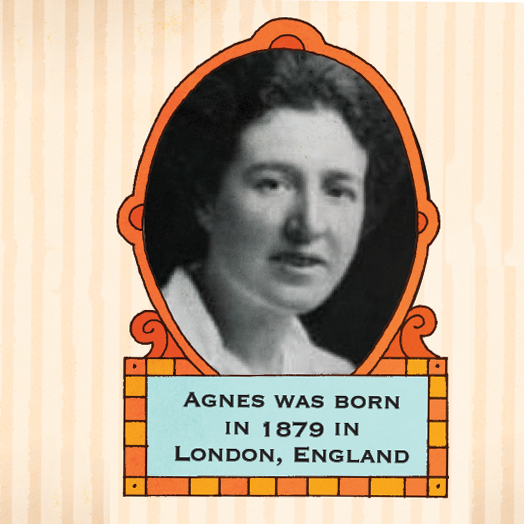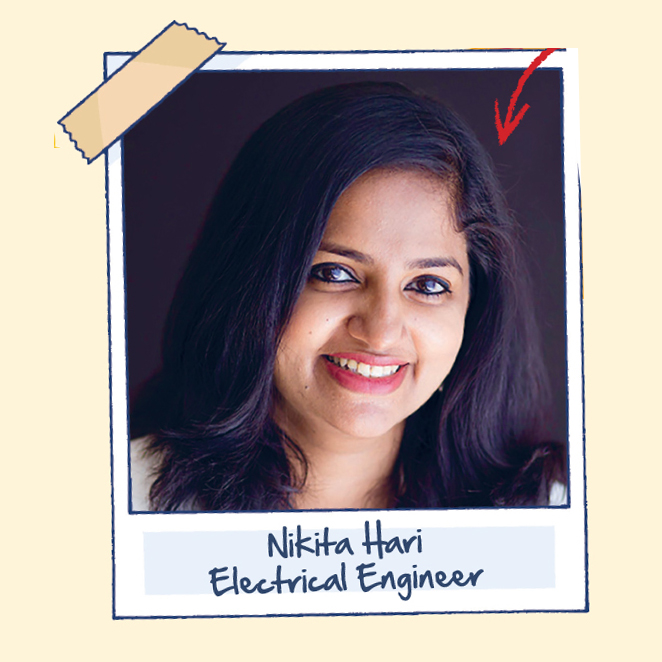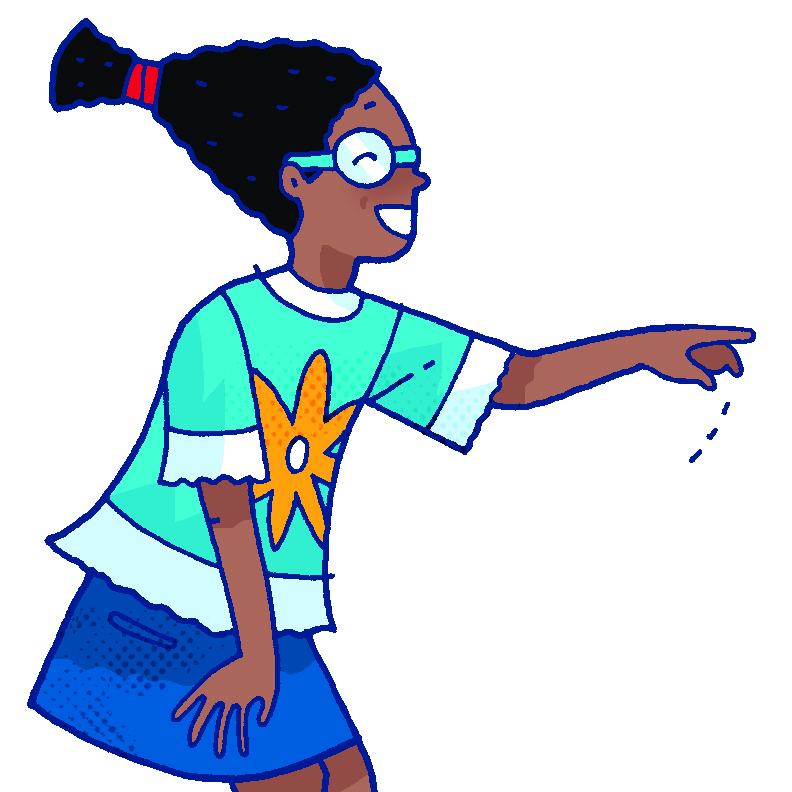After launching themselves from a branch, paradise tree snakes flatten their bodies into a wing shape and ‘snake’ through the air, gliding between trees up to 30 metres apart!

Flying snake!
Post Comment

After launching themselves from a branch, paradise tree snakes flatten their bodies into a wing shape and ‘snake’ through the air, gliding between trees up to 30 metres apart!

Each month we celebrate a sensational scientist from history; an eminent figure in the creation, invention or discovery of a scientific breakthrough. How many famous scientists can you name? How many of those are women? Female scientists were often forgotten or unknown, simply because they were women. And yet their work was instrumental in discovering hugely important scientific breakthroughs.
Inside Whizz Pop Bang magazine your kids will discover the historic world of science; who invented computers, who discovered the milky way and who is responsible for how we forecast the weather. We tell the story of these fascinating scientists, both male and female, and how they came to discover incredible things.
A few examples of the less well-known women we’ve featured: Lise Meitner, whose work led to the discovery of nuclear fission, astronomer Caroline Herschel and Agnes Arber, botanist and early ambassador in helping the world to recognize the amazing talent of women in science. Read the full list of sensational scientists below.

List of the sensational scientists featured in Whizz Pop Bang magazine:
Issue 1: Mary Anning
Issue 2: Charles Darwin
Issue 3: Maria Telkes
Issue 4: Leonardo da Vinci
Issue 5: Lise Meitner
Issue 6: Louis Pasteur
Issue 7: Rosalind Franklin
Issue 8: Antoine Lavoisier
Issue 9: Mary Somerville
Issue 10: Charles Lyell
Issue 11: Caroline Herschel
Issue 12: Jacques Cousteau
Issue 13: Grace Hopper
Issue 14: Roy Chapman Andrews
Issue 15: William Henry Perkin
Issue 16: Isambard Kingdom Brunel
Issue 17: Florence Nightingale
Issue 18: Albert Einstein
Issue 19: Gregor Mendel
Issue 20: Rachel Carson
Issue 21: Ibn al Haytham
Issue 22: Richard Feynman
Issue 23: Agnes Arber
Issue 24: Alfred Wegener
Issue 25: Jeanne Villepreux-Power
Issue 26: George de Mestral, velcro
Issue 27: Marie Curie
Issue 28: Nicolaus Copernicus
Issue 29: Hedy Lamarr
Issue 30: Archimedes
Issue 31: Anselmus De Boot
Issue 32: Joseph Bazalgette
Issue 33: Charles Darwin
Issue 34: Michael Faraday
Issue 35: Gerty Cori
To buy a back issue for just £3.75 (with free UK delivery!) visit our shop.


Each month we interview a SCIENCE HERO to find out what real scientists do in their jobs. This is where we ensure we have a real mix of male and female scientists to inspire girls and boys, and particularly showcase women in STEM roles. Breaking down gender stereotypes is an important part of Whizz Pop Bang magazine as we strive for a future of equality.
Many of the scientists we interview are happy to be contacted by readers who have their own questions, a great opportunity to chat to real scientists! We love this tweet from Electrical Engineer Nikita Hari who’s passionate about inspiring kids into science, especially girls…

Are your kids super curious, always asking questions and exploring new ideas? Help them to nurture their natural curiosity with Whizz Pop Bang! Here’s a list of the 35 scientists we’ve interviewed to date:
Issue 1: Beccy Smith, Chocolate scientist
Issue 2: Karen Ladenheim, Robotics scientist, Stanford University
Issue 3: Lynn Whitfield, Bat ecologist
Issue 4: Dr Steve Brusatte, Palaeontologist, Edinburgh University
Issue 5: Rob Lambert, Antarctic explorer and polar scientist
Issue 6: Tim Peake, Astronaut
Issue 7: Susan Cheyne, Conservation biologist (orangutans)
Issue 8: Misha Lotto, young scientist, Blackawton Bees Project
Issue 9: Josie Campbell, Vet
Issue 10: Shane Cronin, Volcanologist (New Zealand)
Issue 11: Jennifer Andon, Entomologist
Issue 12: Dr Maddalena Bearsi, Marine biologist
Issue 13: Prof Robert Winston, Medical scientist, Imperial College
Issue 14: Sarah Shelley, Fossil hunter
Issue 15: Helen Czerski, Bubble scientist
Issue 16: Abbie Hutty, Mars Rover engineer
Issue 17: Lara Aknin, Psychology professor (gift-giving)
Issue 18: Emma Burke, Penguin aquarist
Issue 19: Ian Gilby, Primatologist, Tanzania
Issue 20: Caoimhe Doyle, Foley Artist, sound effect engineer
Issue 21: Amy Dejong, Food scientist, University of Wisconsin

Issue 22: Payton Barnwell, Nanotechnologist, Florida Polytechnic Uni
Issue 23: Dave Goulson, Bumblebee biologist
Issue 24: Huw James, Science adventurer
Issue 25: Alex Hildred, Maritime archaeologist
Issue 26: Cierra Martin, Seed guardian
Issue 27: Toby Gemmill, Orthopaedic vet
Issue 28: Dr Sheyna, Martian (sort of!)
Issue 29: Richard Stammers, Visual effects artist
Issue 30: Andres Ruzo, Geothermal Scientist
Issue 31: Lisa Elser, Gem cutter
Issue 32: Pratap Pullammanappallil, Associate Professor of Agricultural and Biological Engineering at the University of Florida, USA
Issue 33: Dr Nicola Rooney, Research Fellow in the Animal Welfare and Behaviour Group at the University of Bristol
Issue 34: Nikita Hari, Electrical Engineer
Issue 35: Barry Drust, Professor of Exercise Physiology
Whizz Pop Bang magazine has helped to inspire lots of girls and boys to want to be scientists when they grow up! To buy a back issue (for just £3.75 inc UK delivery) visit our back issues shop or you can sign up for monthly magazines by post – simply subscribe online.



Mini scientist Poppy explains how to play the virtual breeding game in the Purr-fect pets issue of Whizz Pop Bang science magazine.
Experiment with breeding different dogs together and see what colour the puppies are! Each dog has two copies of the coat colour gene. The black coat gene (B) is dominant and the brown coat gene (b) is recessive. This means that only puppies with bb genes will be brown, and all those with one or two B genes will be black.
What you do:
You should find:
Even though Daisy and Max are black, they can still produce brown puppies together, but Buddy and Bella will never produce brown puppies, even if they’re bred with a brown dog. Only Molly with Rocky will produce all brown puppies. Brown puppies are rarer than black so they cost more. This is why pet breeders often breed closely related animals with rare features together.
To play this game, buy the Purr-fect Pets issue of Whizz Pop Bang magazine from our online shop for just £3.75 with free UK delivery.

We’ve been inundated with your photos of edible poo!!!! The PLOP-TASTIC poo issue has been the most popular issue of Whizz Pop Bang, proving (as if any parent or teacher needed proof) that kids really do love talking about poo!
WARNING! DO NOT look at these photos whilst eating, or if you’re easily offended by the sight of very realistic poo on a plate…
Intrigued about the ingredients for edible poo? Buy the PLOP-TASTIC poo issue of Whizz Pop Bang science magazine from our back issues shop and let the poo-themed fun begin!



“I decided to get Oliver a subscription to @whizzpopbangmag for Christmas. It arrived today packed in this lovely festive red envelope, it was addressed to him and even had a little note saying ‘Open on Christmas Day!’. Oliver is really excited to find out what it is. He loved the fact it was addressed to him personally. I am really excited for him to open it on Christmas Day and when he realises next here will be an issue being delivered EVERY MONTH • I am hoping this will inspire us to spend some time together reading and doing science stuff. I have always wanted to get magazine subscriptions for Christmas and I am really glad I have this year. I’ve also got the younger boys one too • Have you ever got a subscription for someone? Is it something you would consider? Also, this is cheaper (even with delivery) than buying the magazines from the local shop and the bonus is no plastic tat stuck on the front.” Cherie Lewis-Quinn
This independent review was posted on Instagram by @mymamamusings

There’s magic in the air here at Whizz Pop Bang! Prepare to wow your friends and family with all sorts of awesome tricks – each with a scientific explanation, of course!
You can make a reindeer with a mysterious moving head, make a dish completely disappear inside another dish, conjure up a Christmas star without using your hands, and magically join two paperclips without even touching them! These are just a few of the marvellous tricks and magical experiments inside the ABRACADABRA issue of Whizz Pop Bang magazine.
Why not host a magic show? You can impress your family and friends with the magic tricks, and then WOW them by explaining how each trick works!

What could be better than curling up on the sofa with your favourite magazine? Young Arthur has the answer to that question, when it comes to reading his favourite magazine it’s all about wearing the right clothes too.

“I really really love your magazine. Receiving it is the thing I look forward to the most. I love it so much I asked my mum to make some science clothing for me…. so this month I got to enjoy reading your magazine wearing my science trousers. If you look closely you will see planets, microscopes and anything a scientist will need. In fact I think it actually has all of your science equipment hidden on it!
Thank you for the magazine.”
Arthur (age 6)
Arthur’s Mum followed up with this lovely message, and news of more science-lovers in the family…

Thank you to Arthur, his Mum and sister for sending in this glowing review for Whizz Pop Bang 🙂

To celebrate World Science Day on 10th December we ran a competition for our online fans to win 12 awesome Whizz Pop Bang magazines, all stored neatly in a binder. We asked people to send in their science jokes, only those suitable for kids, and we’re very pleased to say we had loads which is very good news for our editors who love a good science joke ?
We decided the winning joke needed to be right for our readers, so 6 to 11-year-olds, and the sort of joke that really makes you chuckle. But how could we choose from over 50 jokes?! Well, luckily we have a group of kids at hand who took great pleasure in reading every single one, and whittling it down to their top five favourite, then three, then two and finally after much debate… one.
Want to see the long list? We thought you would…

‘Technically the glass is always full: 1/2 water and 1/2 air’
From Alexandra Vakula Douglas‘How do you tell the gender of a termite? Put it in water. If it sinks, it’s a girl ant. If it floats, it’s a buoyant’
From Lisa TaylorHow does the moon cut his hair? Eclipse it!
From Megan Sian‘How do you organize a space party? You planet’
From Ebony Ava Johnson‘What do clouds wear underneath their trousers? Thunderwear’
From Clare LeeWhy didn’t the Sun go to university? Because he already had a million degrees!
From Meldra LiepaWhy should you never trust an atom? Because they make everything up!
From Sophie, age 9 / Helen Foster-HensonI’m reading a book on anti-gravity – it’s really hard to put down
From Lucy Goodridge / Catharine FrancescaWhat do spacemen do on long trips? They play astronauts and crosses
From Suzanne Cawley
As you can see the process involved print outs, cut outs, different coloured pens, ticks and an awful lot of deliberation!
But we have a winner, one joke that made us all laugh – the kids and the grown ups… the winning science joke is…
Why didn’t the Sun go to university? Because he already had a million degrees!
From Meldra Liepa
Congratulations to Meldra and her family who have won 12 issues of Whizz Pop Bang science magazine in a binder! Happy experimenting!
Which joke is your favorite? Tell us in the comment box??
Wish you’d won? Just make sure you put a subscription to Whizz Pop Bang on your Christmas list ?